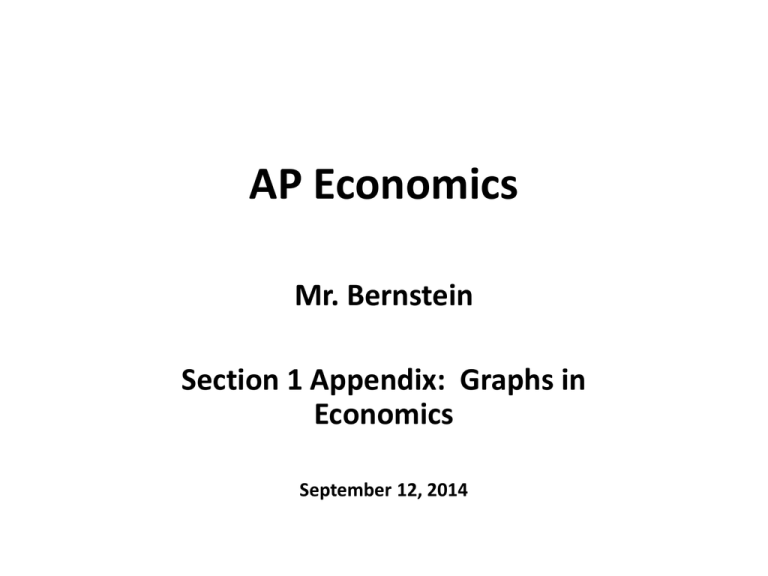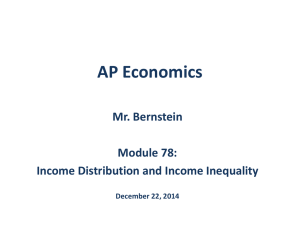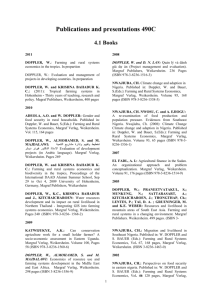Graphs in Economics
advertisement

AP Economics Mr. Bernstein Section 1 Appendix: Graphs in Economics September 12, 2014 AP Economics Mr. Bernstein Plotting Points on a Two-Variable Graph • Horizontal axis is X-axis • Vertical axis is Y-axis • Origin is where axes meet, variables = zero • X-axis is the independent variable • Y-axis is the dependent variable • Example: Temperature and soda sales 2 AP Economics Mr. Bernstein Curves on a Graph • Linear Relationship • Positive Relationship • Negative Relationship • Examples: Temperature and soda sold, Temperature and Hot Chocolate sold 3 AP Economics Mr. Bernstein Slope of a Linear Curve • Measure of steepness, or how strong the effect of the independent variable is on the dependent variable…aka sensitivity or delta • Change in y / Change in x = slope • Slope of horizontal line is zero • Slope of vertical line is infinite 4 AP Economics Mr. Bernstein Slope of a Linear Curve 5 AP Economics Mr. Bernstein Nonlinear Curves • Positive Increasing Slope • Positive Decreasing Slope • Negative Increasing Slope (concave) • Negative Decreasing Slope (convex) 6 AP Economics Mr. Bernstein Nonlinear Curves 7 AP Economics Mr. Bernstein Slope of Nonlinear Curves • Slope is changing as you move along the curve • Slope is typically expressed as the slope between two points • Curves can have maximum or minimum points (where slope changes from positive to negative or vice versa) 8 AP Economics Mr. Bernstein Calculating Area Below or Above a Linear Curve • Measure height and base of right triangle, multiply, then divide by 2 9 AP Economics Mr. Bernstein Graphs That Depict Numerical Information • Time-Series • Scatter Diagrams • Pie Charts • Bar Charts and Histograms 10











